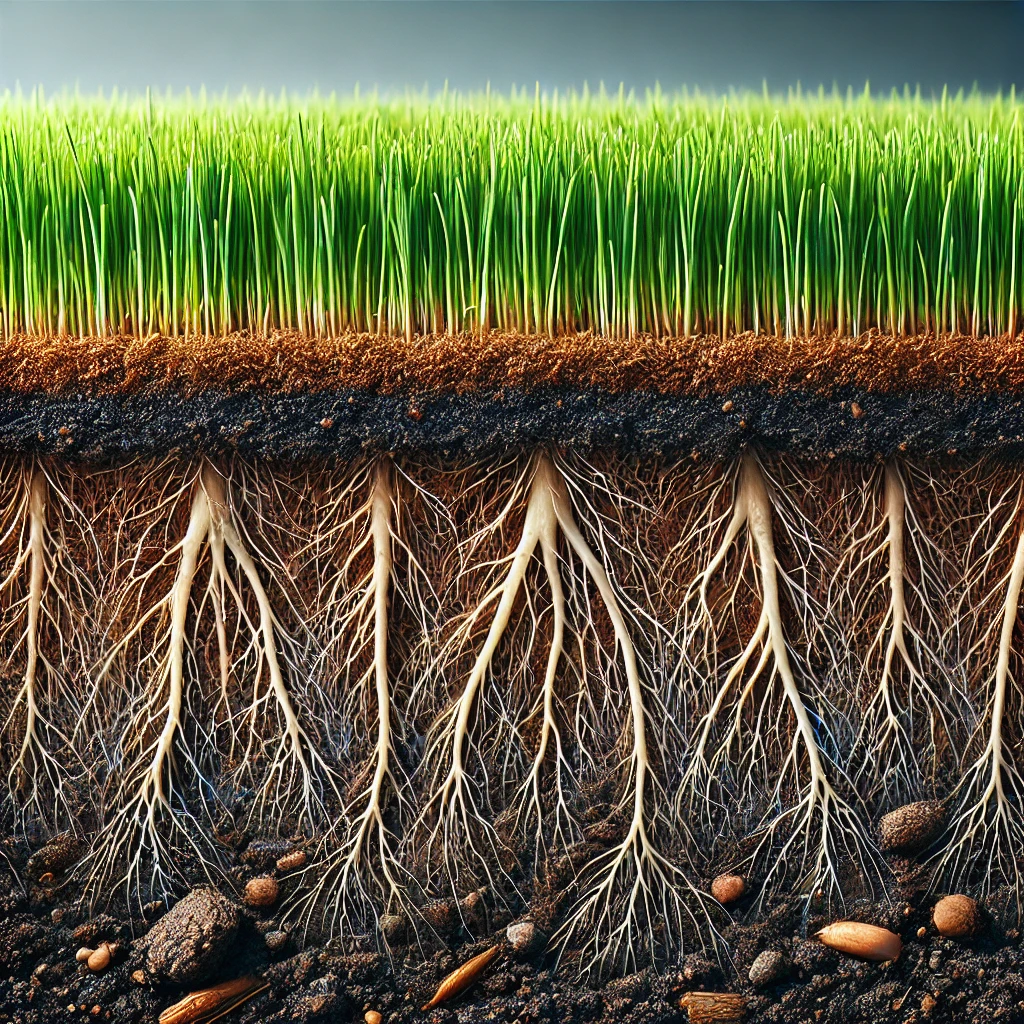A vibrant lawn doesn’t just happen overnight. The foundation of a healthy, disease-resistant lawn lies beneath the surface—in the soil. Good soil health is crucial for promoting vigorous grass growth and preventing lawn diseases. In this guide, we’ll explore the vital role of soil health in disease prevention and share expert tips on how to maintain it.
Understanding Soil Health
Soil health refers to the condition of the soil and its ability to sustain plants and other organisms. Key components of soil health include:
- Soil Structure: Well-structured soil has good porosity, allowing air and water to move freely, which is essential for root growth.
- pH Balance: The soil’s pH level affects nutrient availability. Most grasses thrive in slightly acidic to neutral soil (pH 6-7).
- Organic Matter: Decomposed plant and animal material enriches the soil with nutrients and improves its structure.
- Microbial Activity: A healthy population of beneficial microorganisms helps decompose organic matter, fix nitrogen, and suppress harmful pathogens.
Healthy soil is dark, crumbly, and full of life. In contrast, unhealthy soil may be compacted, lacking in organic matter, and have poor water retention and drainage.
The Connection Between Soil Health and Disease Prevention
Healthy soil supports robust root systems and strong grass, making lawns less susceptible to diseases. Here’s how it works: Healthy soil balances water retention and drainage, preventing the conditions that favor fungal diseases. Proper nutrient levels and pH balance ensure that grass gets the nutrients it needs to grow strong and resist diseases. Additionally, beneficial microbes outcompete harmful pathogens, reducing the likelihood of disease outbreaks.
Practices to Improve and Maintain Soil Health
- Soil Testing: Regular soil testing helps monitor pH levels and nutrient content. This information allows you to adjust your soil management practices accordingly.
- Organic Matter Addition: Adding compost, mulch, and other organic materials improves soil structure, fertility, and microbial activity. Aim to incorporate organic matter into the top 6-8 inches of soil.
- Proper Fertilization: Use fertilizers that enhance soil health without overloading it with chemicals. Organic fertilizers and slow-release formulations are preferable as they provide steady nutrient supply without causing nutrient burn.
- Aeration: Regular aeration reduces soil compaction, allowing roots to grow deeper and access nutrients and water more effectively. It also promotes gas exchange, which is crucial for root respiration and microbial activity.
- Mulching and Cover Crops: Mulching helps retain soil moisture and adds organic matter as it decomposes. Cover crops, like clover or rye, can be planted during off-seasons to protect the soil from erosion, improve soil structure, and add nutrients.
Common Soil-Related Lawn Diseases and Their Prevention
Root Rot
Cause: Excessive moisture and poor drainage.
Prevention: Improve drainage and avoid overwatering.
Brown Patch
Cause: High humidity and excessive nitrogen.
Prevention: Water early in the morning, avoid over-fertilization, and ensure proper air circulation.
Fusarium Blight
Cause: Compacted soil and poor air circulation.
Prevention: Regular aeration and balanced fertilization.
Long-term Soil Health Strategies
Maintaining soil health is an ongoing process. Here are some long-term strategies:
- Sustainable Practices: Adopt sustainable lawn care practices that focus on building and maintaining soil health, such as organic fertilization and integrated pest management.
- Balanced Ecosystem: Encourage a balanced ecosystem in your lawn. Beneficial microbes, earthworms, and other soil organisms play a critical role in decomposing organic matter, cycling nutrients, and suppressing diseases.
Healthy soil is the cornerstone of a vibrant, disease-resistant lawn. By understanding the components of soil health and implementing practices to improve and maintain it, you can create an environment where your grass thrives. A healthy lawn not only looks great but is also more resilient against diseases and environmental stresses.
Want to ensure your soil remains healthy and your lawn disease-free?
Contact GreenStripe today for expert soil testing and lawn care services. Our professionals are here to help you achieve a lush, healthy lawn that stands the test of time.



